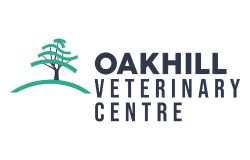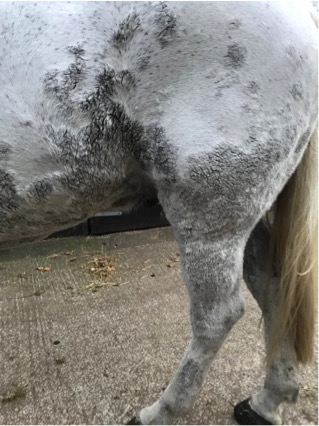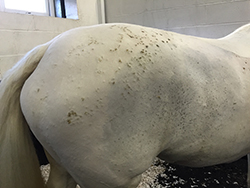Colic is the term used to describe abdominal pain. This is usually from the gastrointestinal tract but can be from any abdominal organ (e.g. the ovaries). Colic signs include curling of the top lip, pawing the ground, flank watching, rolling, increased recumbency (lying down) and change in the amount and/or consistency of droppings. Most cases require a veterinary examination to determine the cause and instigate treatment, from pain relief through to life-saving surgery.
Initially the vet will observe the horse to see how severe the signs are. The cardiovascular system is then assessed. The mucous membranes (gums or inner eyelids) are examined to establish how well the blood is circulating round the body. The membranes should be salmon pink, and when blanched this colour should return within two seconds (the capillary refill time or CRT). Any discoloration of these membranes, with or without increased CRT, are a sign of poor circulation. Dry mucous membranes are a sign of dehydration.
A heart rate will then be taken. Slight increases in heart rate can often be attributed to increased stress levels in the horse, but a very high rate is generally an indication of dehydration and disrupted circulation. The digital pulses (at the level of the fetlock) may also be felt – a lack of indicating poor circulation, and an increase potentially indicating toxic laminitis (caused by gut toxin leakage into the circulation).
Poor circulation results from the leakage of toxins from damaged gut into the circulation. The gut becomes damaged when it gets twisted or stuck, cutting off the blood supply that keeps it alive and functional. Mild dehydration can arise from reduced water intake or sweating. Severe dehydration normally occurs when the damaged gut is no longer capable of absorbing fluid into the body.
Following cardiovascular assessment, a respiratory rate is obtained. An increased rate can be due to the horse being in pain and using more energy whilst colicking. It can also be due to chemical changes in the blood caused by toxin release. Rarely, an increased respiratory rate can be caused by something in the abdomen pressing on the lungs e.g. a stomach impaction (where food fails to leave the stomach causing expansion and discomfort).
Next the vet will listen with a stethoscope at four points on the abdomen. A moderate amount of noise should be heard, as gas and food move through the guts (borborygmi). Increased noise is generally an indication of spasmodic movement of the guts. Decrease in, or absence of noise usually indicates that gut movement has stopped or that the portion of gut that is normally positioned in this area has been displaced, which can indicate a more serious problem.
The horse’s temperature is then taken. A low temperature can indicate poor circulation, and a high temperature generally indicates infection.
If the vet is now satisfied that the horse merely has some spasmodic gut pain, the colic examination is complete and appropriate medication can be administered. However, if a more serious cause of colic is suspected, a rectal examination will occur. A lubricated, gloved arm is inserted into the horse’s rectum so the vet can feel deeper into the abdomen. The size, position and content of different portions of the gut (and other structures e.g ovaries, tumours) can be assessed allowing an accurate diagnosis of which part of the gut (or otherwise) is affected. Rectal examination has huge benefits but also carries a small risk of tearing the lining, hence it will not be carried out if deemed unnecessary.
Horses are unable to vomit, so if your vet is suspicious that the passage of food and liquid through the stomach is obstructed, they will pass a tube via the nostril to aspirate excessive fluid build-up. Without the ability to vomit or the act of stomach tubing, a horse’s stomach can eventually rupture. Once your vet is confident that no excess ingesta is present in the stomach, they may use it as a route of treatment for dehydration, administering fluid and electrolytes.
This is routinely the end of an ‘on-yard’ colic examination. If your horse needs to be admitted to a clinic, further examinations may take place. These include abdominal ultrasound, blood sampling and peritoneal fluid (the fluid lubricating the abdominal organs) sampling. These samples can be looked at with the naked eye or machine analysed to provide information about how the rest of the body is coping with the problem causing the colic signs.
Ultimately, the vet will be able to make an accurate diagnosis and appreciate how sick the horse is. Appropriate treatment can be advised with the vet able to predict the horse is well enough to recover after treatment, or if (on some sad occasions) euthanasia needs to be considered.
Approximately 90% of colic are diagnosed as medical. Of these, only a very small proportion will require more than one treatment. The sooner the horse arrives at a surgical facility, the better the prognosis. In all cases, this detailed examination will limit any period of discomfort and distress for both you and your horse.


